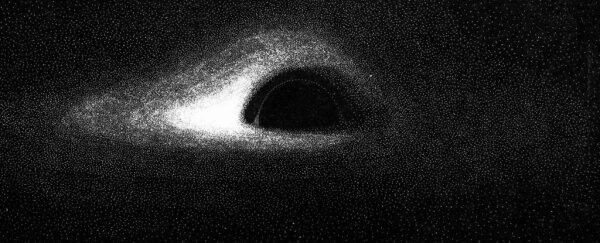Formation of Black Holes
Stars are formed when large giant clouds of gases (mainly hydrogen) collapse on themselves when gravitational attraction pulls them inward, causing them to contract. When the gas clouds contract, the molecules collide with each other at greater speeds, causing the gas cloud to heat up.
As the gas tends to get denser and hotter, hydrogen atoms merge with each other to form helium, releasing tremendous heat energy in the process - it is this heat which causes the stars to shine. The pressure created by this additional heat counteracts gravity, preventing the gas from contracting, creating a stable star.
The bigger the stars are, the hotter they need to be to counteract gravity’s pull. The hotter they are, the more fuel they use, the faster they run out of hydrogen.
The Death of Stars
When the fuel starts running out, the star contracts, the distance between the molecules reduce. Pauli’s exclusion principle states that no two fermions (particles with half-integer spin like electrons, protons, and neutrons) can occupy the same quantum state in an atom. It’s like they can’t be roommates in the same quantum “apartment”.
Breaking it down more simply, no two matter particles can have the same position and the same velocity. So on the contraction of stars, the particles get very close to each other, therefore they must have different velocities and as they tend to move away from each other, the star expands and fights against the gravitational pull yet again. This prevents further collapse for just a while.
There’s a limit to which every principle holds true. Hence, there’s a limit to the repulsion caused by the exclusion principle.
Different Stellar Endpoints
If a star’s mass is sufficiently less than a certain limit (up to three times the sun’s mass), the repulsion forces win and the star won’t contract. It settles down to a cooling state called white dwarf. Though white dwarfs aren’t quite white, they emit a faint, ghostly light, basically radiating the remaining heat into the vast emptiness of the space.
Stars with even lower birth masses of about one or two times the sun’s mass, leave behind a neutron star. Why are they called so? It’s because these stars are supported by the repulsion between neutrons and protons, instead of the electrons.
Say the star’s mass is way beyond the limit after which the repulsion forces get weak. Sometimes when these huge giants run of their fuel to sustain themselves, they just explode, throwing out enough matter to reduce their mass. Although this does not always happen. The possibility of such an explosion happening every time is pretty small, no matter how big the star.
So when an individual large enough star collapses, it continues to contract and forms a singularity, a point of infinite density and zero size, called a stellar black hole. Supermassive black holes are like billion times the sun and reside at the centre of most galaxies. The other type of black holes that exist include intermediate, primordial and binary black holes.
The Event Horizon
The gravitational field at the surface of a black hole is incredibly large, and somehow manages to bend the path of light inwards, so much that it can no longer escape the boundary which is called the event horizon.
It corresponds to a wave front of light from the star that just fails to escape to infinity but remains hovering at the Schwarzschild radius: 2 GM/√c, where G is Newton’s constant of gravity, M is the mass of the star, and c is the velocity of light. For a star of about ten solar masses, the Schwarzschild radius is about thirty kilometres.
Wavefront of light: A wavefront of light refers to the leading edge of that wave – the “crest” of the ripple, so to speak. The event horizon corresponds to the point where the immense gravity bends the wavefronts of light so much that they can’t travel outwards anymore. They are kind of “stuck” at that boundary.
The second law of thermodynamics states that the entropy of a system always increases. Interestingly, the more a black hole swallows, the bigger its event horizon gets.
Falling into a black hole has become one of the horrors of science fiction.
Stephen Hawking
Like most science fiction lovers, the mere thought of stumbling into a black-hole and discovering some unseen and distant corner of the universe drove me crazy.
But unfortunately enough, you’d be torn apart into pieces by the insane amount of gravity.
Hawking Radiation
Recent developments in the theoretical physics including quantum mechanics and the uncertainty principle suggest that black holes aren’t entirely “black”.
The uncertainty principle allows particles to travel faster than light for a short distance. Some radiation and particles are able to cross the event horizon, thanks to this brief outburst of energy. But what comes out of a black hole, will be different from what fell in, only the energy remains constant.
So black-holes emit particles and radiations, gradually losing mass over time until they evaporate into nothingness. So what happens to the objects that had fallen into it? Are they lost forever? This idea contradicts the information loss paradox which states that information cannot be destroyed in the universe.
Hawking’s reached to a wild conclusion that the lost objects will go off into “baby universes” branching off from our own space-time continuum, emerging as a parallel reality which may eventually re-enter our universe. So to a third-party observer, who’s totally oblivious to this hoard of wild information, it would seem as if the black hole just disappeared.
The existence of baby universes might hold the key to explaining some cosmic mysteries but unfortunately may not serve as portals for interstellar travel.
